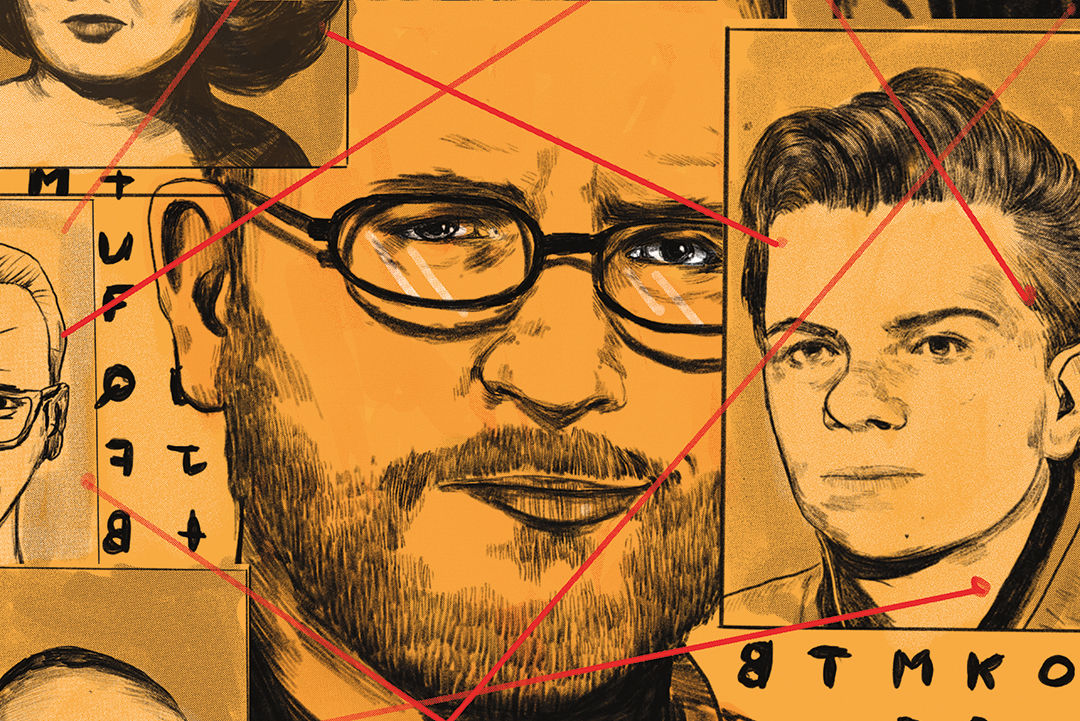The Zodiac Crimes and ‘Zynchronicity’

Image: Michael Novak
In the Zodiac crimes, there’s a word for the phenomenon of overlapping and seemingly improbable coincidence: “Zynchronicity is everywhere in this case,” says Tom Voigt, the Portland-based founder of ZodiacKiller.com. “You wind up chasing shadows.” Here is just some of the Zynchronicity around Richard Gaikowski one can find in the Zodiac websphere, including Voigt’s website, Reddit, documentary film footage, and other sources. There is more, much more, and plenty of reasonable doubt to cast upon all of it, too.
In the Codes
Gaikowski used phonetic abbreviations of his name in his personal and professional life. In the first round of codes sent to newspapers July 31, 1969, in which the Zodiac promises to reveal his identity, the letters G Y K E can be clearly seen in a line of code. This first cipher, known as the Z408 for its number of characters, was for decades the only confirmed Zodiac cipher to be solved, using a key developed by amateur code-cracking newspaper readers. In the solution, the letters GYKE solve to AUSE—part of the word “because”—giving the first two syllables of Gaikowski’s last name. After 51 years, the cipher known as Z340 was cracked by a team of citizen detectives and confirmed by the FBI in December 2020.
On the Map
In early 1966, Darlene Ferrin and her first husband, Jim Crabtree, moved from the East Bay to New York state, where Crabtree went to work for the Albany Times-Union. Two weeks later, Gaikowski decamped for Albany to work at the Knickerbocker News, part of Hearst Syndicate and operating out of the same building as the Times-Union. By 1968, all three were back in the Bay Area; in 1969, Ferrin was killed by the Zodiac. In 1973, the Times-Union received a letter from someone claiming to be the Zodiac.
In the Papers
Following the public naming of Gaikowski as a suspect, Zodiac sleuths began a wholesale review of his work in newspapers, especially at the Good Times. On the same day the Zodiac’s first letters were sent in three parts to three Bay Area papers, the Good Times ran a cover split in thirds. In early 1970, the Good Times ran its own version of a three-part code next to a headline that read “Zodiac Message” as part of its weekly horoscope feature, written by Gaikowski. Other horoscope headlines included phrases such as “Zodiac Strikes Again,” in handwritten script oddly similar to that used in the Zodiac Killer letters.
Wednesday was production day for the alt-weekly. Between 1969 and 1973, the year the Good Times went out of business, Zodiac letters were mailed to newspapers every day of the week except Wednesday.
On the Calendar
In 1968, Gaikowski applied for a passport, planning to travel as a journalist. If he’d been abroad, he couldn’t have committed the first confirmed Zodiac crime. Voigt has detailed ways in which his reporting “from Europe” in ’68 had been plagiarized from the Observer, a UK newspaper.
Shortly after Gaikowski was involuntarily committed, the Zodiac letters stopped. They resumed in 1974 with a new round of letters filled with movie references, including what’s become known as “The Exorcist Letter”—essentially a film review. By this time, Gaikowski had been released from the hospital and was operating a cinema in the Mission District.
The Zodiac closed the Exorcist letter with a chilling tally: “Me - 37 SFPD - 0.” Many assumed this was allusion to additional victims, which fit with a previous threat to continue killing without directly claiming credit, making attacks look like accidents. When Gaikowski emerged as a suspect, a new interpretation emerged: at the time the letter was sent, Gaikowski was 37 years old.




